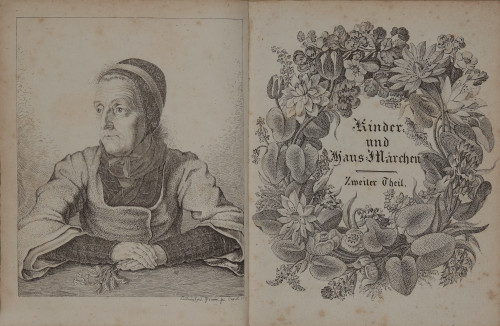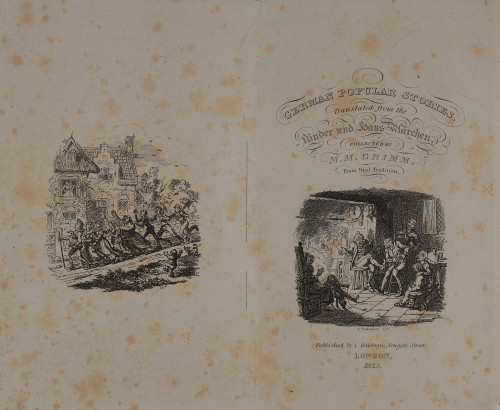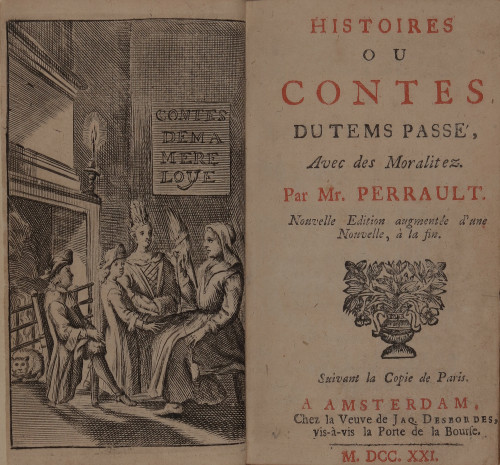The Children’s and Household Tales — or Grimms’ Fairy Tales, as they are known in English — are world literature. It is Jacob and Wilhelm Grimm that we have to thank for them, two brothers born in Hanau in 1785 and 1786. Their university teacher was Friedrich Carl von Savigny, the founder of the German Historical School of Jurisprudence. Savigny put the Grimms in contact to his brother-in-law Clemens Brentano, who was looking for support after the successful publication of the first volume of the song collection The Boy’s Magic Horn. Brentano wanted to collect not only more poems, but also “sagas and fairy tales”.
The Brothers Grimm, who lived and worked in Kassel, collected folk songs for the sequel to The Boy’s Magic Horn, but also fabulous tales which they sent to Brentano in 1810. The latter hardly made use of the material, however, and when he did, he took a lot of liberties with it. The Grimms did not approve. So they continued collecting on their own, with the support of Arnim, who advised them to publish their finds.
Volume 1 of Grimm’s Fairy Tales came out in 1812, with a dedication to Bettine von Arnim and her son Johann Freimund. Volume 2 followed three years later. The fairy tales initially had a hard time with the reading public, however, prompting Arnim to recommend less “bookishness” and more illustrations. The second, enlarged edition of the Grimm’s Fairy Tales was published in two volumes in 1819, followed in 1822 by a third containing a scholarly appendix on their origins and meaning. This second edition was the first to feature title illustrations and, in volume 2, a portrait of the storyteller Dorothea Viehmann. Apart from Viehmann, it was mainly younger women from the Grimms’ middle-class social milieu who contributed texts. In those days, culture in Kassel was strongly influenced by the town’s large Huguenot population. That explains why the Tales also include some penned by the French fairy tale writer Charles Perrault, for example Cinderella and Sleeping Beauty. Other material points to Italian sources.
The second edition soon brought translators to the scene. The English collection was published with great success, thanks to the illustrations by George Cruikshank. It was that edition that inspired the Brothers Grimm to publish a “Little Edition” of fifty fairy tales in 1825. Wilhelm Grimm now oversaw the production on his own and included seven illustrations by his younger brother Ludwig Emil Grimm. This edition helped the collection to a national — and later an international — breakthrough.
For every edition that followed, Wilhelm Grimm made more revisions, gradually creating the typical Grimmian fairy- tale style with its well-known phrases such as “Es war einmal…” and “…wenn sie nicht gestorben sind, dann leben sie noch heute” — in English: “Once upon a time …” and “They all lived happily ever after”.
To this day, the Grimm’s Fairy Tales is the most-published and most-translated German book of all time; its illustrations are countless. The walls of this display were designed by the artist Henrik Schrat. The depiction takes Sleeping Beauty as its starting point, but many other fairy tale motifs are found here as well. It is not least of all thanks to its accompanying illustrations that the Grimms’ Fairy Tales — and thus a product of German Romanticism — are among the unforgettable childhood memories of readers all over the world.
Objekte
-

ENGELBERT HUMPERDINCK
Hansel and Gretel, 1890‒1893
2. Akt: Abends will ich schlafen gehn. Ann Murray (Hänsel), Edita Gruberová (Gretel). Staatskapelle Dresden, Leitung: Sir Colin Davis. Decca 1992
-

Jacob and Wilhelm Grimm
Kinder- und Hausmärchen. Gesammelt durch die Brüder Grimm
Berlin: Realschulbuchhandlung 1812.
-

JACOB GRIMM und WILHELM GRIMM
German Popular Stories, Translated from the Kinder und Haus Märchen, collected by M. M. Grimm, From Oral Tradition
London: Baldwyn 1823.
-

CHARLES PERRAULT
Histoires ou Contes du tems passé, Avec des Moralitez. Par Mr. Perrault
Nouvelle Edition augmentée d’une Nouvelle (L’Adroite Princesse), à la fin. Amsterdam: La veuve Desbordes 1721. – Titelkupfer Contes de ma mere loye (Geschichten von meiner Mutter, der Gans) nach Antoine Clouzier.